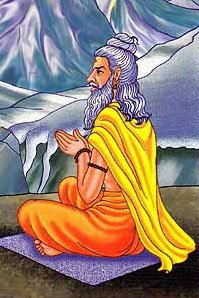Shatstri, Shash-stri, Ṣaṭstrī: 1 definition
Introduction:
Shatstri means something in Hinduism, Sanskrit. If you want to know the exact meaning, history, etymology or English translation of this term then check out the descriptions on this page. Add your comment or reference to a book if you want to contribute to this summary article.
The Sanskrit term Ṣaṭstrī can be transliterated into English as Satstri or Shatstri, using the IAST transliteration scheme (?).
In Hinduism
Purana and Itihasa (epic history)
Source: archive.org: Shiva Purana - English TranslationṢaṭstrī (षट्स्त्री) refers to the “six ladies” (i.e., the Kṛttikās), according to the Śivapurāṇa 2.4.3 (“The boyhood sports of Kārttikeya”).—Accordingly, as Brahmā narrated to Nārada: “[...] Meanwhile the six ladies (ṣaṭstrī) named Kṛttikās came there for bath and they saw the lordly boy [i.e., Guha / Kārttikeya]. All of them desired to take and fondle him O sage, as a result of their simultaneous desire for taking and fondling the boy, a dispute arose. In order to quell their mutual dispute, the boy assumed six faces and drank milk off their breasts. O sage, they were all satisfied. [...]”.

The Purana (पुराण, purāṇas) refers to Sanskrit literature preserving ancient India’s vast cultural history, including historical legends, religious ceremonies, various arts and sciences. The eighteen mahapuranas total over 400,000 shlokas (metrical couplets) and date to at least several centuries BCE.
See also (Relevant definitions)
Relevant text
No search results for Shatstri, Shash-stri, Ṣaṭstrī, Ṣaṣ-strī, Satstri, Sas-stri, Shat-stri, Ṣaṭ-strī, Sat-stri; (plurals include: Shatstris, stris, Ṣaṭstrīs, strīs, Satstris) in any book or story.